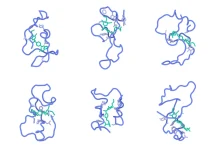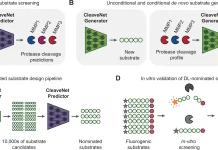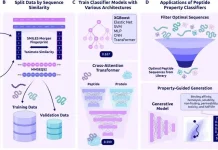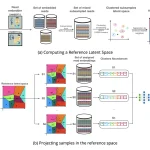A team of scientists from the German Center for Neurodegenerative Diseases (DZNE) and Helmholtz AI have conducted an innovative study that presents DrugDiff — a unique tool to generate new compounds with different desired molecular properties. This tool will change the face of the early stages of drug development by generating fresh small molecules possessing some necessary attributes.
The drug industry continues to search for ways to increase the speed with which it finds drugs that are both effective and safe. Traditional approaches have been slow, costly, and have had poor success rates. Recently, artificial intelligence, including machine learning, has shown promise in this regard.
Drug Development Challenges
There are several stages involved in discovering drugs, from target identification to clinical trials. The first one of importance is the identification of potential drug candidates. This involves screening large libraries of chemicals, which can be a time-consuming and resource-intensive exercise. Moreover, this does not guarantee that such compounds possess desirable pharmacological properties.
The DrugDiff: The Game Changer
DrugDiff handles these challenges by exploiting the potential of generative models. It uses a diffusion model, a machine learning algorithm that is very good at generating realistic images, to produce new small molecules. What makes DrugDiff unique is its ability to include targeted molecule properties in the generation process, which allows researchers to come up with molecules with specific traits.
How DrugDiff Works?
Drug Diff operates in three main phases:
- Molecular Representation using VAEs: In this case, researchers converted complex molecular structures into simple numerical representations using Variational Autoencoders (VAEs). This transformation makes the diffusion model easier to compute and generate molecules.
- Molecule Generation through Diffusion Model: Here lies the core of DrugDiff, referred to as the diffusion model. For example, it starts with random noise or gibberish and ends with real mole shapes. This can be compared to painting, where one begins with meaningless lines before creating a picture that can be identified.
- Guidance on Property: DrugDiff includes guidance mechanisms within its structure to ensure desired properties in generated molecules. This incorporates additional models predicting certain features of synthesizing compounds and their diffusion adjustments accordingly.
The Flexibility of Power
One of the most significant benefits of DrugDiff is its flexibility. While many other generative models do not make provisions for such adjustments, DrugDiff can add new aspects to the process of molecule generation without requiring complete model retraining. This adaptability is critical when it comes to researching different pharmaceutical targets and optimizing molecules.
Conventional generative models are often inflexible in design regarding altering the properties required in generated molecules – necessitating extensive retraining. It is time-consuming and computationally expensive due to this constraint. However, DrugDiff handles this problem by separating property prediction from the molecule generation process. As a result, scientists can introduce new properties or refine existing ones on top of the basic generating model.
Possible Effects
DrugDiff could transform the drug industry. This decreases research costs and time-to-market of new drug therapies by speeding up the early stages of drug discovery. This will result in faster treatments for patients suffering from various diseases. Furthermore, DrugDiff’s ability to quickly explore huge chemical spaces may lead to the identification of novel therapeutic entities that would have been missed using conventional methods. It can, therefore, play an important role in creating opportunities for therapeutic intervention through the production of first-in-class drugs. On the other hand, DrugDiff can also be applicable in different sectors like materials science and agrochemistry. Moreover, this could be useful in the envisaged development of more sustainable agricultural chemicals or the design of innovative materials with pre-determined properties.
Conclusion
DrugDiff is a significant step forward for computational drug discovery. It offers hope for addressing problems in the pharmaceutical industry by combining generative modeling with property-guided methods. That way, DrugDiff speeds up drug discovery, broadens chemical space investigation, and facilitates customized molecular design, giving DrugDiff a chance to revolutionize new therapy development. More complex uses of generative models for drug discovery are anticipated as technology advances further. The future of new drug development is very bright, and DrugDiff has taken up a position in line with this thrilling frontier.
Join the Conversation
What are your thoughts on the potential of DrugDiff to revolutionize drug discovery?
DrugDiff represents a significant leap forward in computational drug design. But what does this mean for the future of medicine?
Share your insights and questions below.
Article Source: Reference Paper | The code is available on GitHub.
Important Note: arXiv releases preprints that have not yet undergone peer review. As a result, it is important to note that these papers should not be considered conclusive evidence, nor should they be used to direct clinical practice or influence health-related behavior. It is also important to understand that the information presented in these papers is not yet considered established or confirmed.
Follow Us!
Learn More:
Anchal is a consulting scientific writing intern at CBIRT with a passion for bioinformatics and its miracles. She is pursuing an MTech in Bioinformatics from Delhi Technological University, Delhi. Through engaging prose, she invites readers to explore the captivating world of bioinformatics, showcasing its groundbreaking contributions to understanding the mysteries of life. Besides science, she enjoys reading and painting.
















